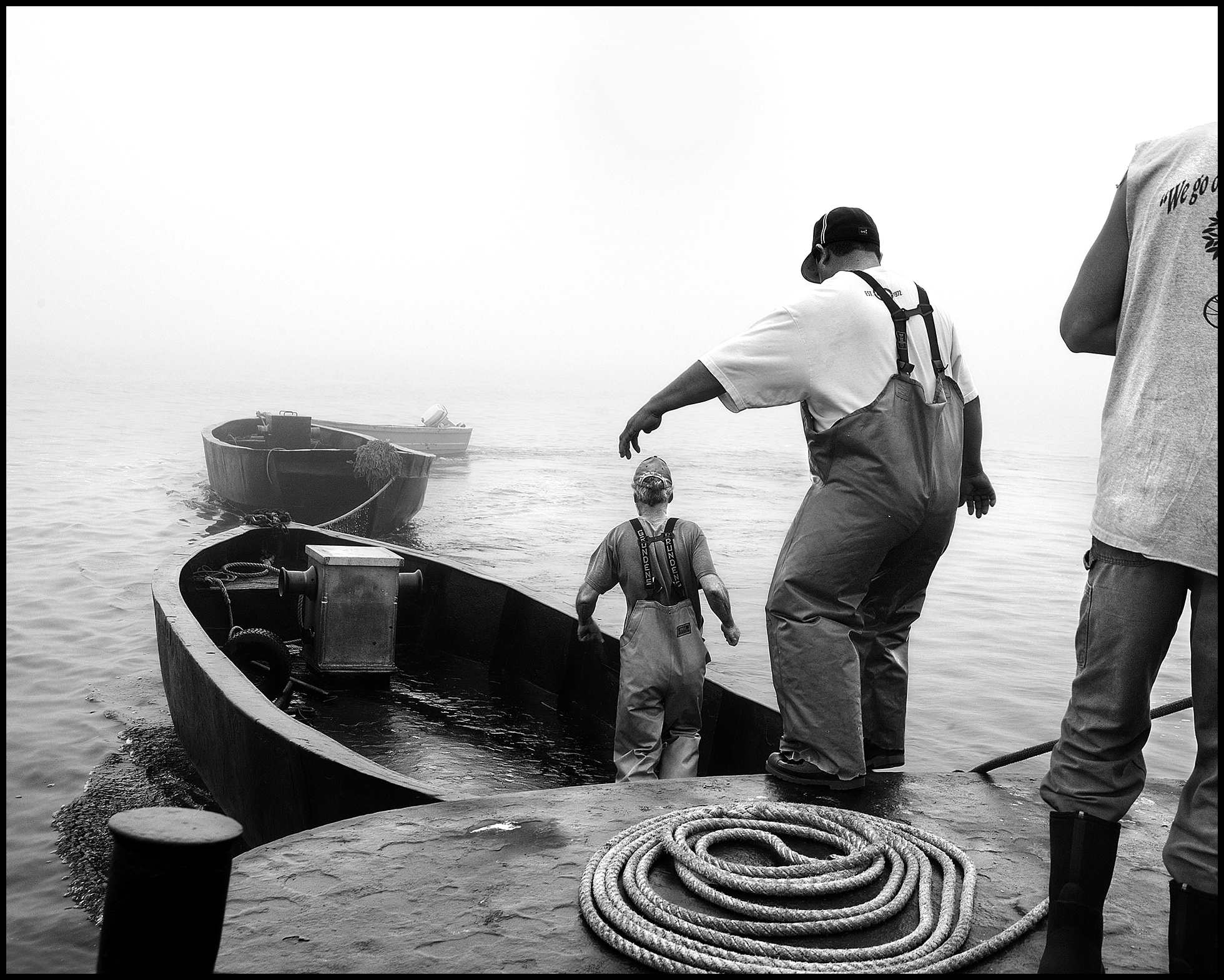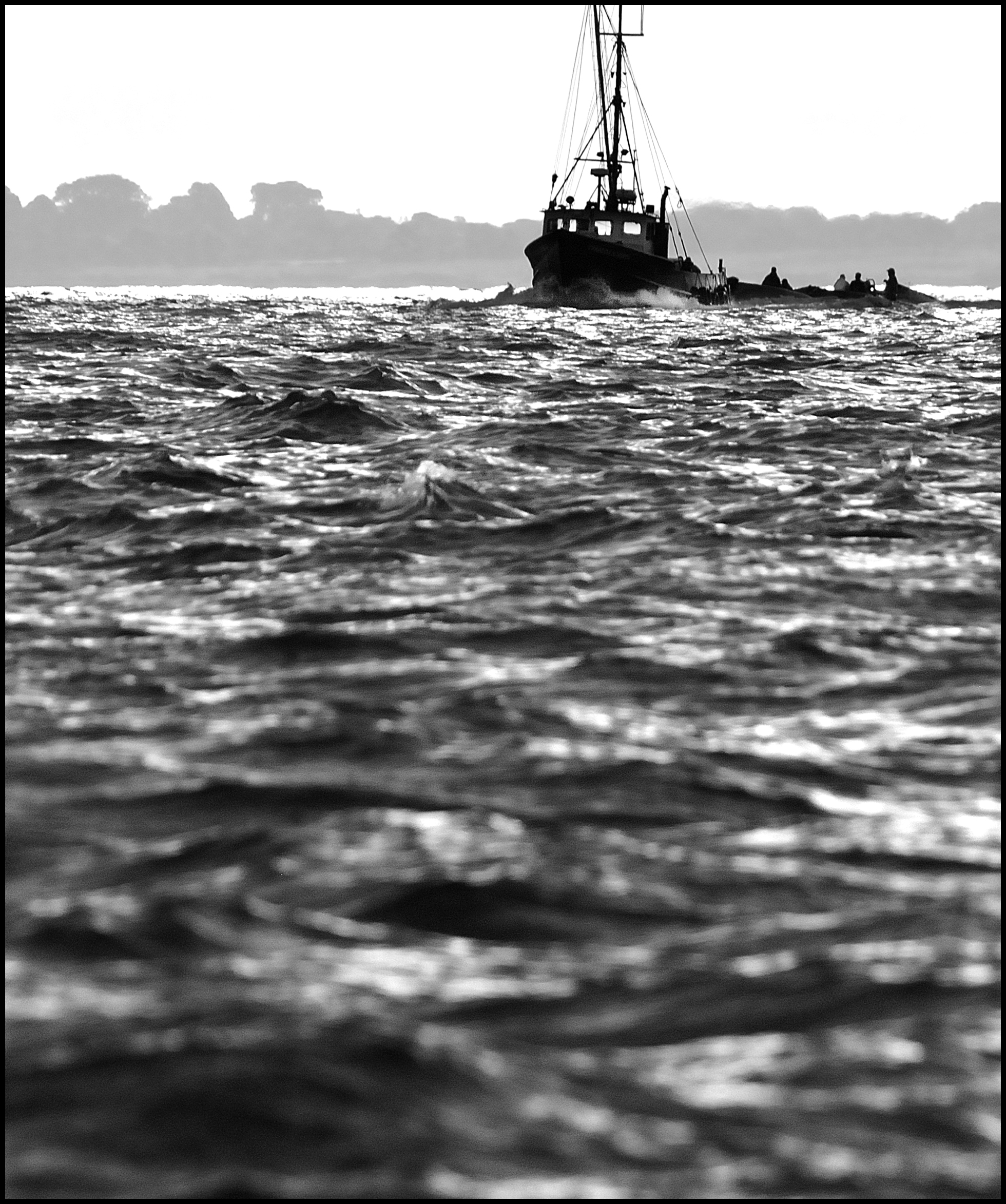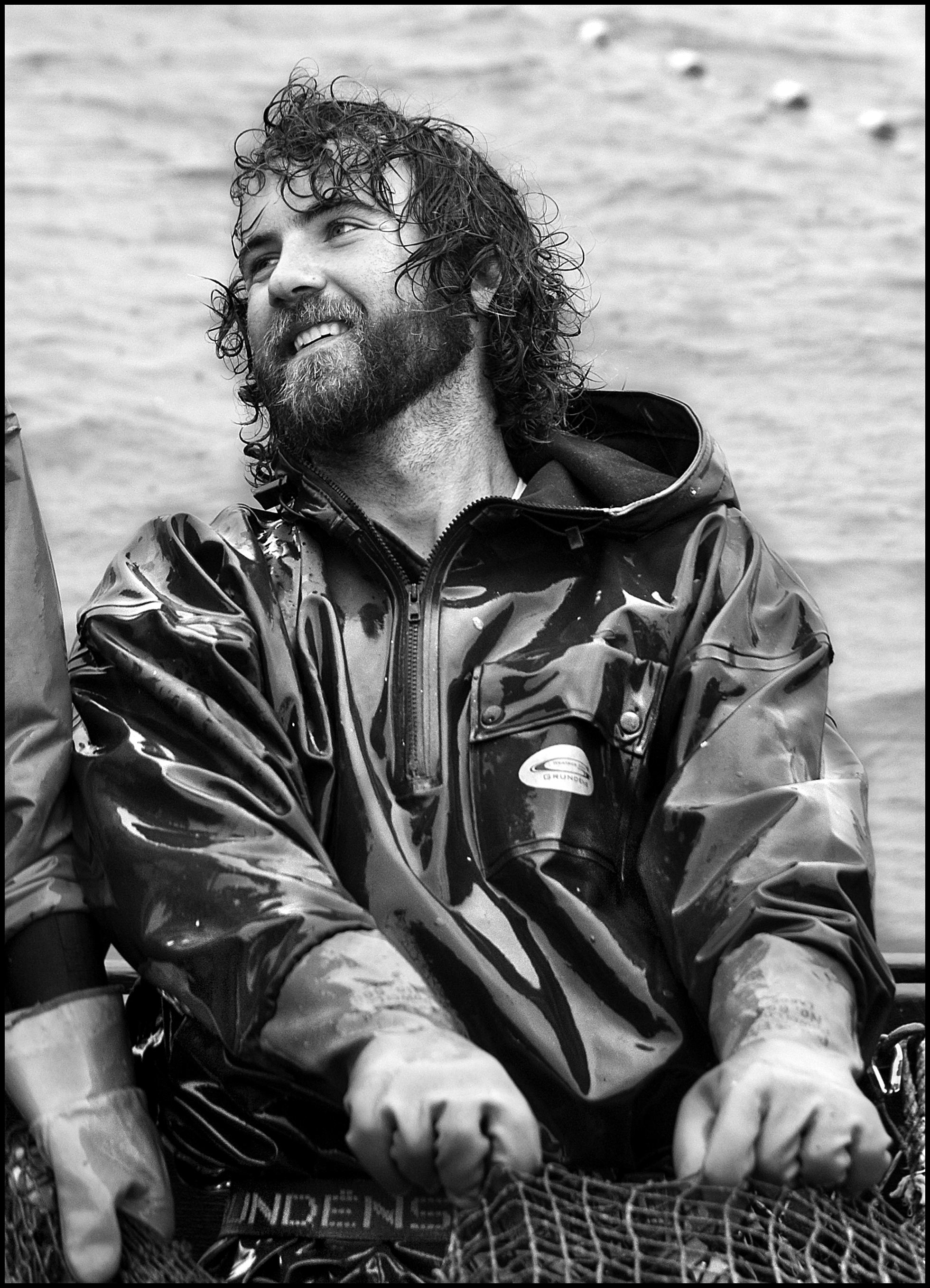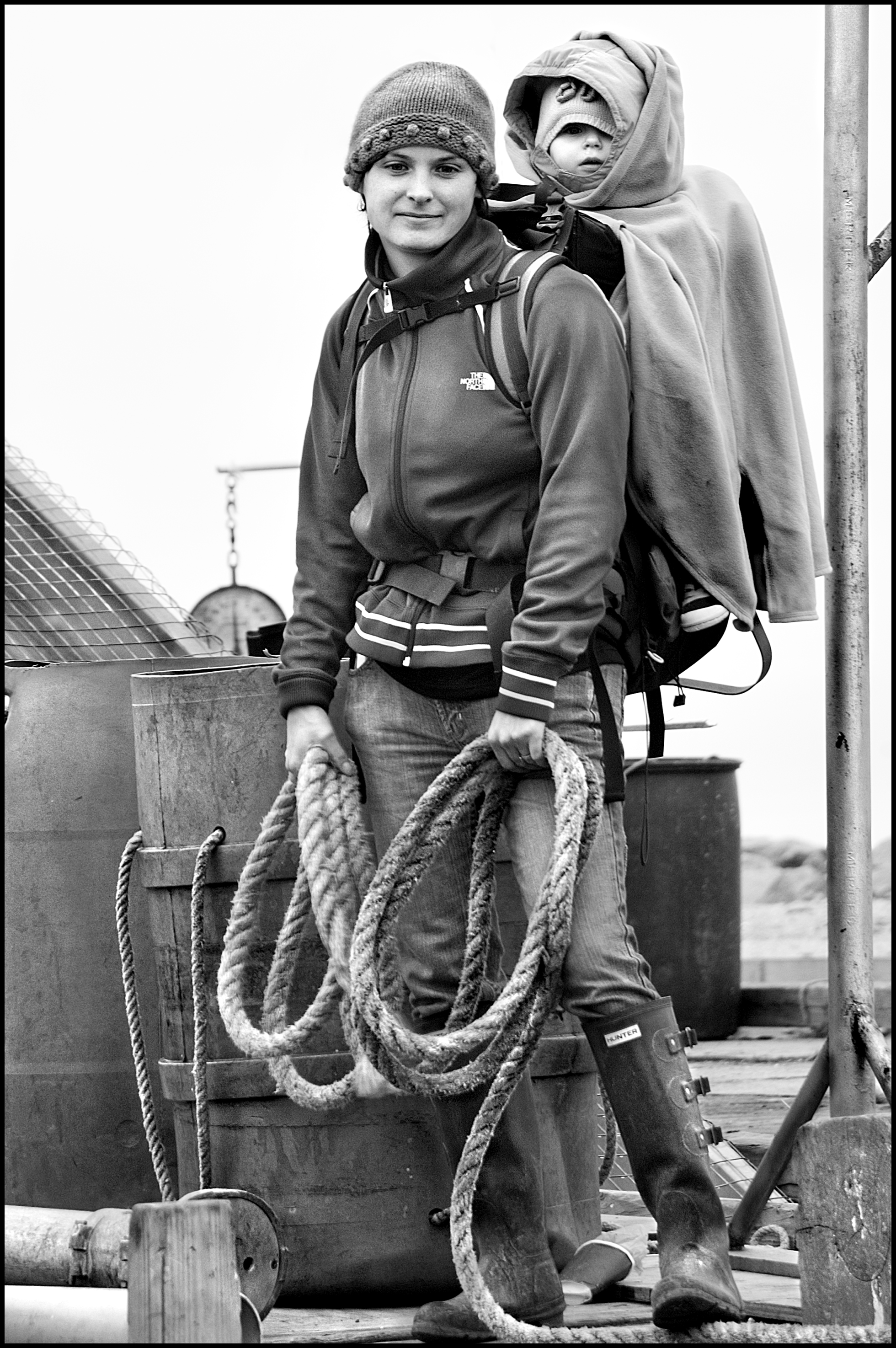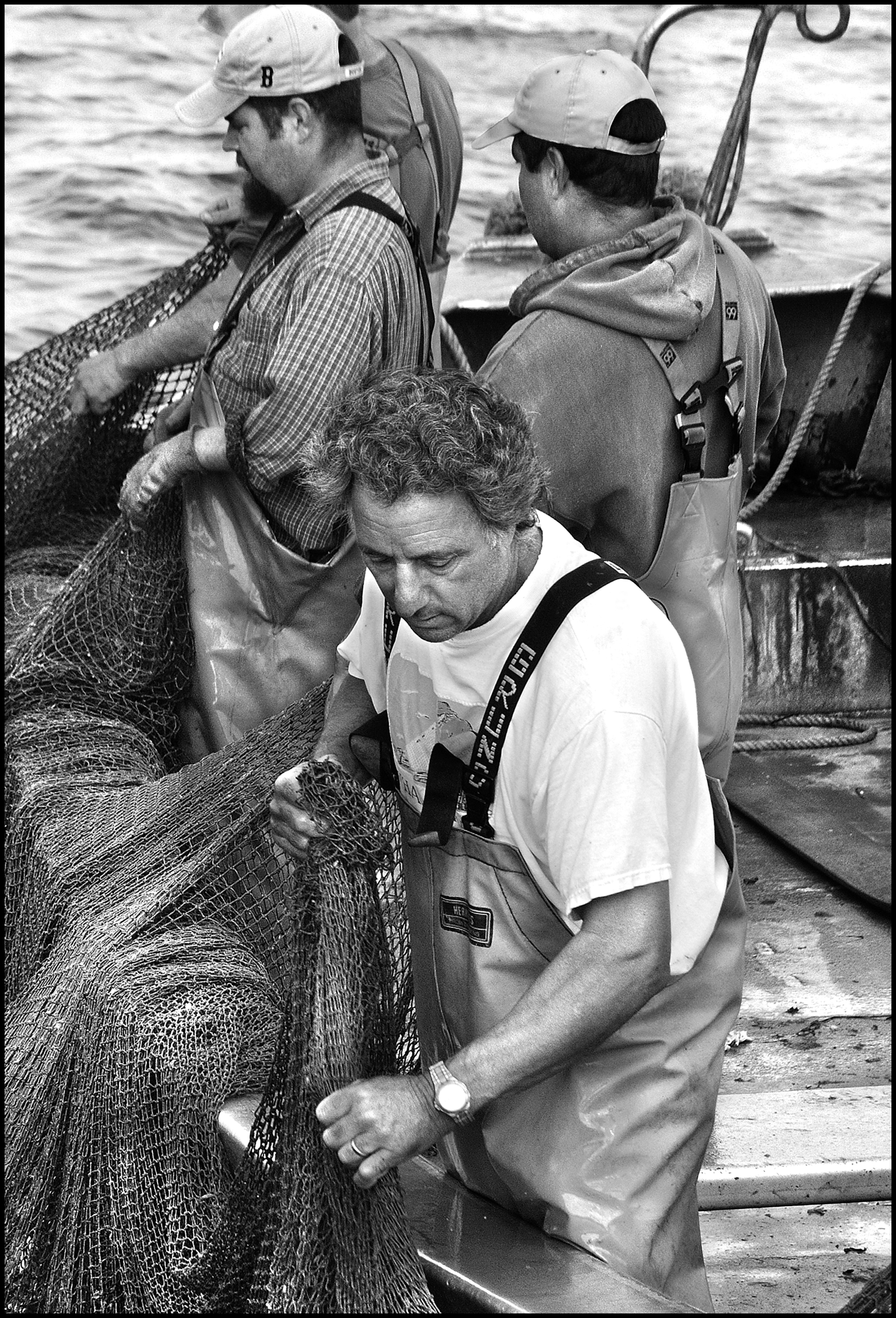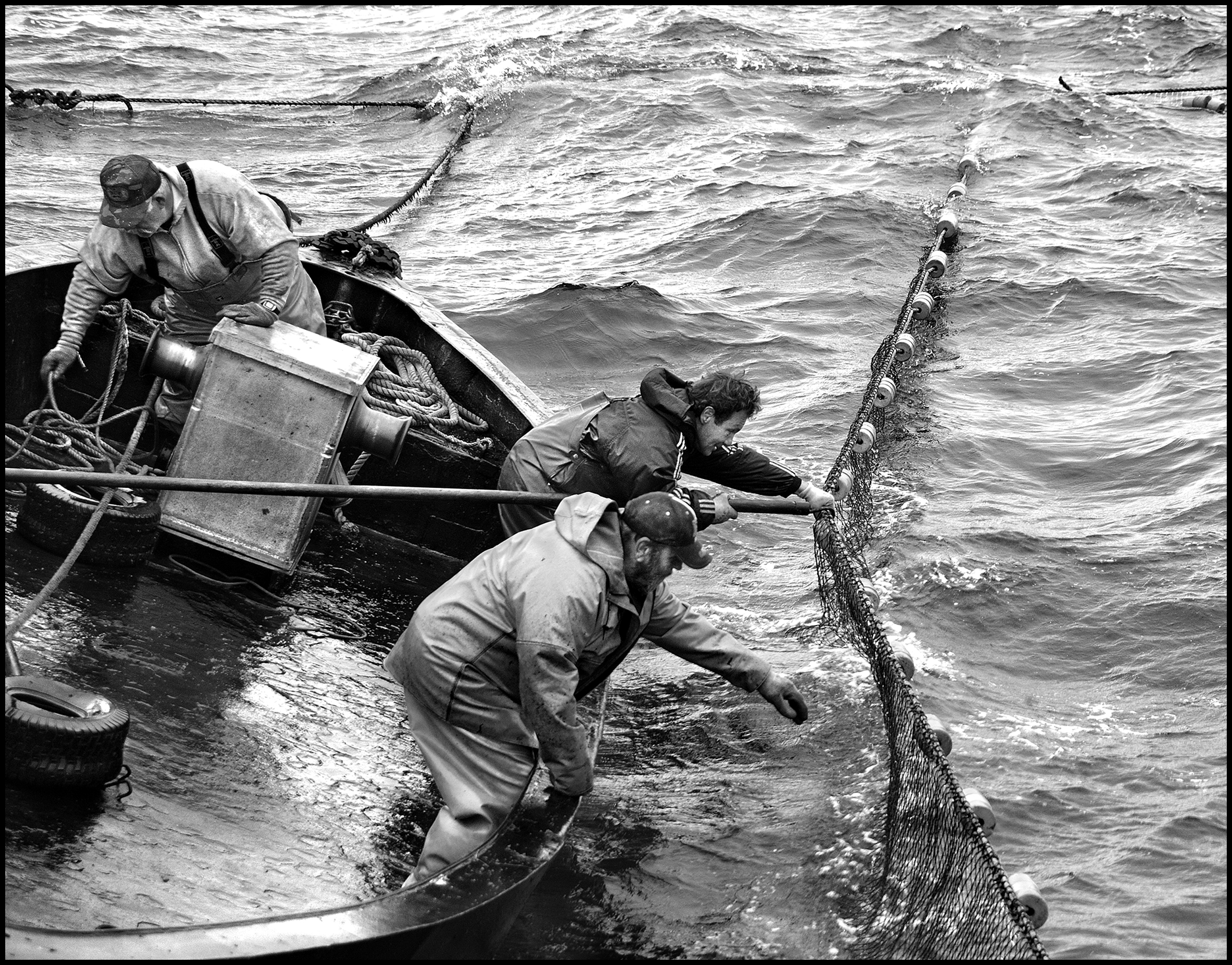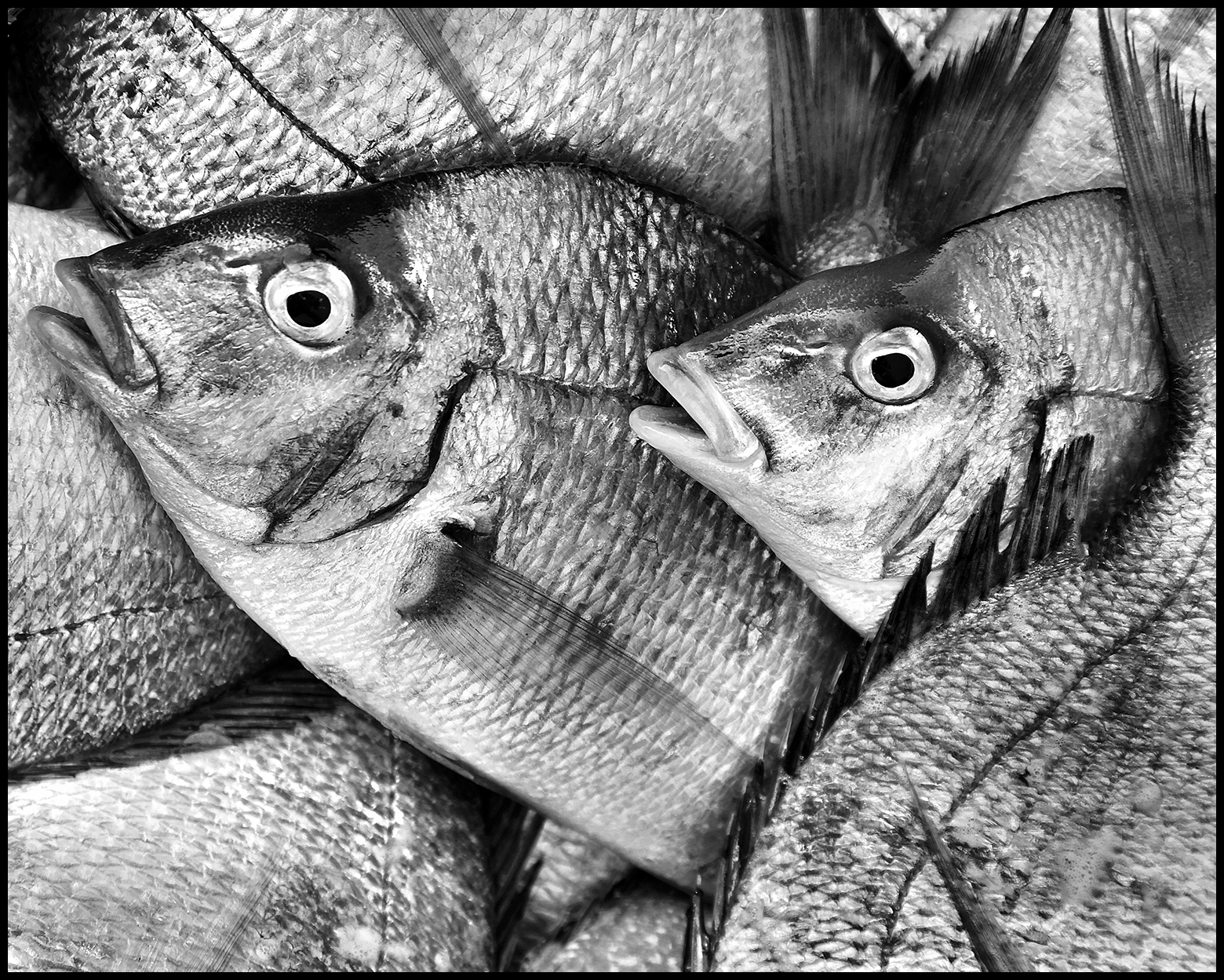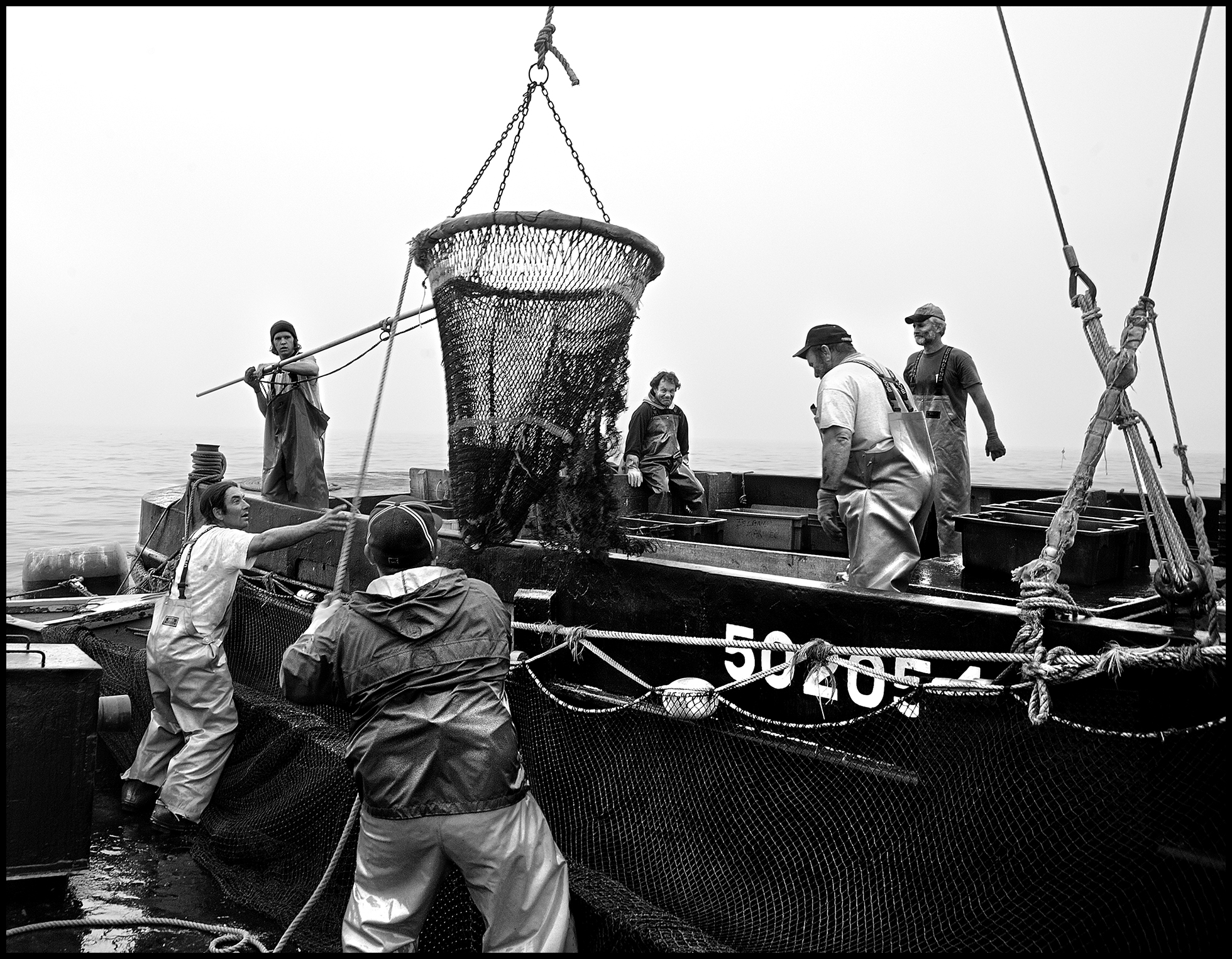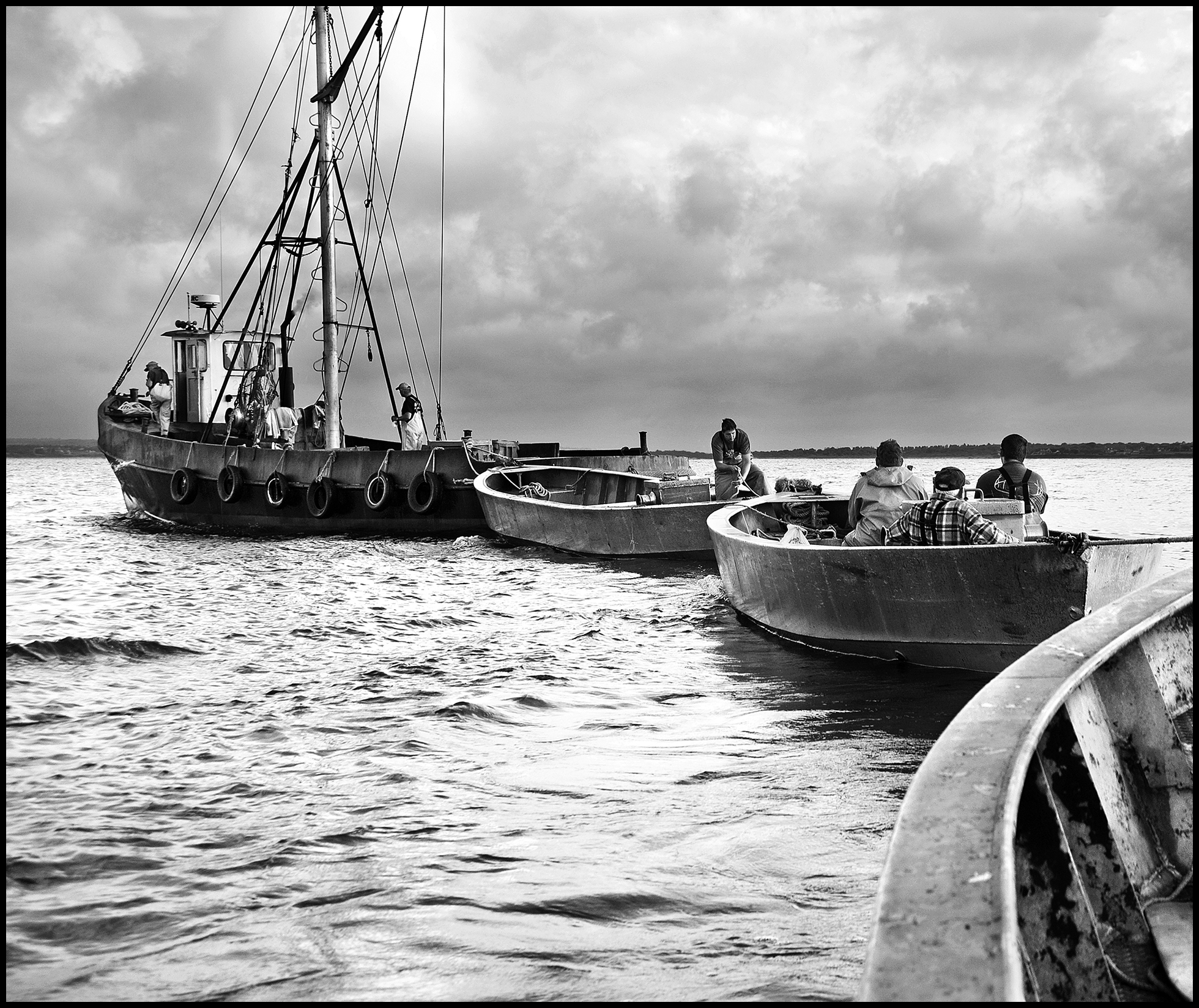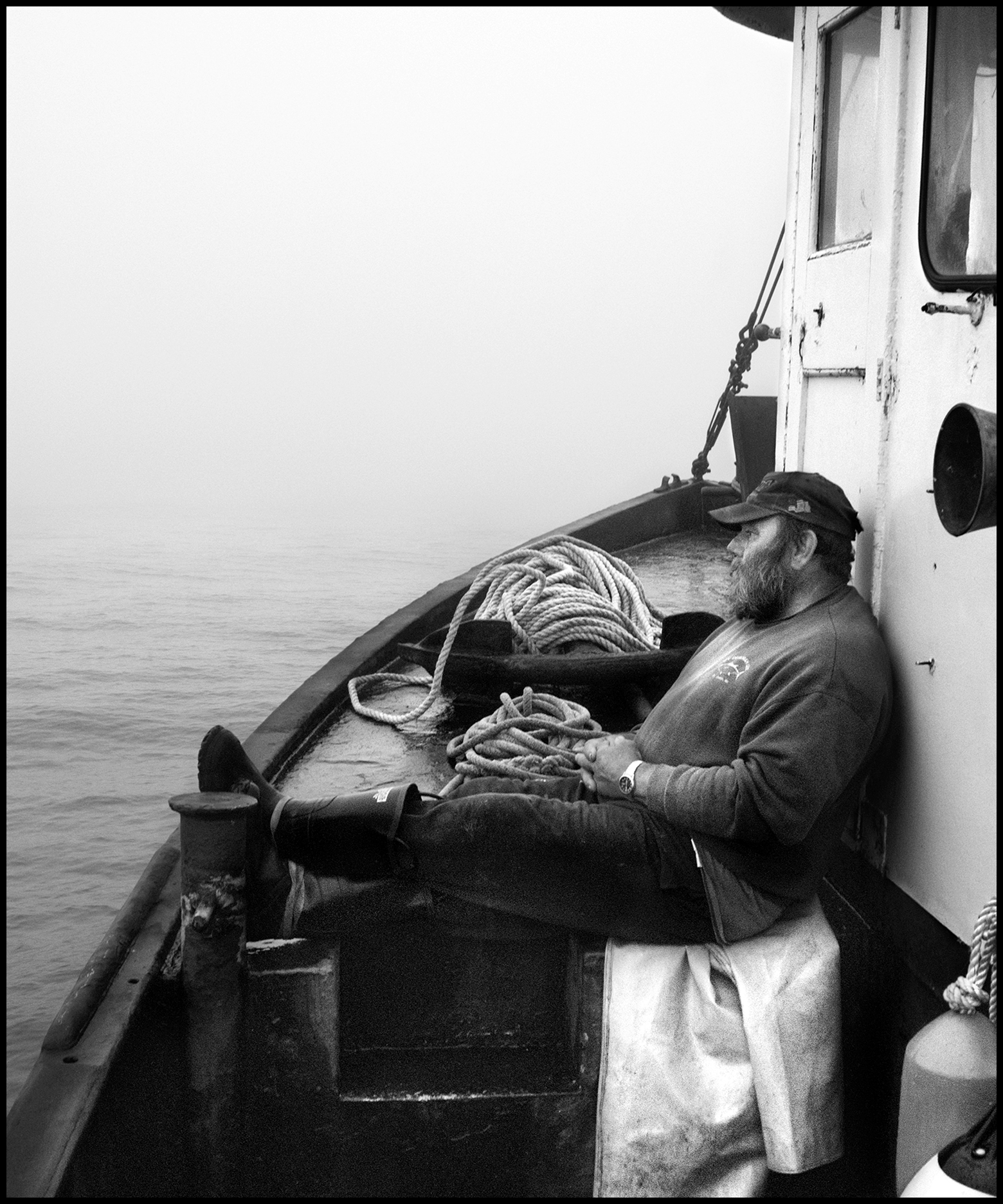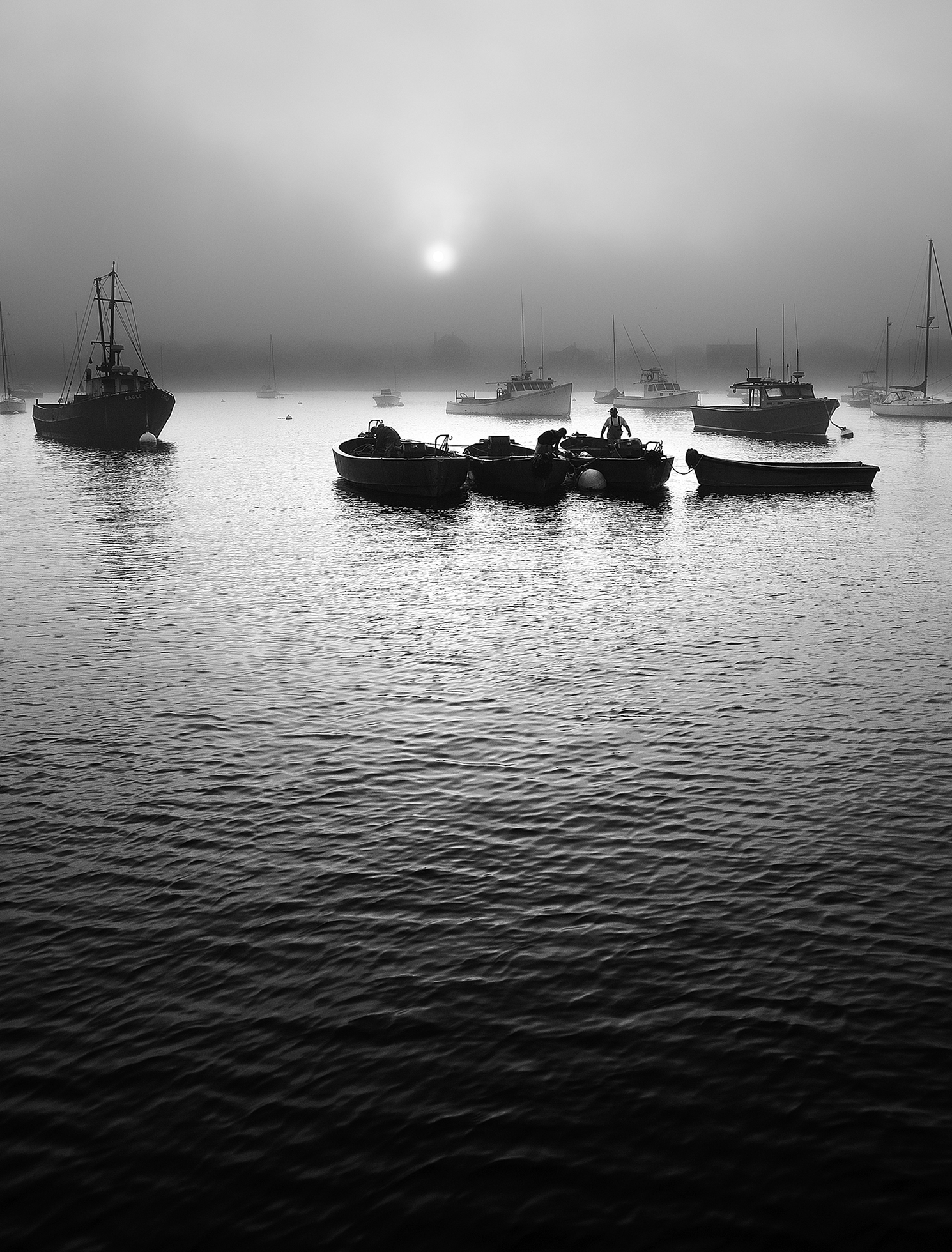The people pictured on these pages are some of the last floating-trap fishermen in Rhode Island. Floating traps — a system of large nets anchored to the ocean floor near the shore — date back to pre-Roman times and have been used in North America since the arrival of the Europeans. Fish swimming along the shoreline get funneled by the nets into a trap at one end, and the fishermen arrive each morning to scoop them out.
Where hundreds of trap-fishing companies once flourished, there are now only four, with just a few dozen employees. The practice has been made nearly obsolete by the modern trawler, which goes out to sea in active pursuit of prey. All fish caught in a trawler’s net will die, including unintended catch, and regulations force the fishermen to discard species they aren’t licensed to land. Because the trap fishermen work close to shore, their boats use less fuel than the trawlers, and because the fish are swimming in the traps, the fishermen are able to keep only the species they intend to capture, letting the rest go.
Overfishing farther out to sea has meant fewer fish migrating up the coastline with each season and tighter restrictions on the number of each species that may be trapped, which puts an additional economic strain on trap fishermen. As fewer young people enter the trade, the skills needed to work and build the complicated nets are disappearing. Like many other collapsed industries that used to thrive in the Northeast, trap fishing may soon be a memory. I want to document these fishermen’s way of life before it’s gone.

